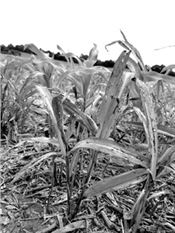Management Of Late Season Johnsongrass

Photo credit: Todd Rankin
DR. LARRY STECKEL
JACKSON, TENN.
Questions continue to arise on management of glyphosate-resistant (GR) Johnsongrass in corn, soybean and cotton. GR Johnsongrass continues to become more of an issue with each passing year. The main threat with Johnsongrass is in corn where there are few POST applied options. Judging by infestations of Johnsongrass in some corn fields we may not be far from having to go back to the time where we grew maize dwarf mosaic (MDM) virus tolerant corn.
The questions in corn are from fields where Johnsongrass has escaped clethodim + glyphosate early burndown and Halex GT in crop (picture attached). Much of this corn is now in the V5 to V7 corn growth stage so we are running out of time. The only two good options are Accent which has a cutoff of V6 corn and Liberty which has a cutoff of V7 corn. The best option is a sequential application of Accent followed by Liberty. Unfortunately, we do not have the time to wait to come back with Liberty so I would go with Accent.
Please consider that the Johnsongrass is recovering from those earlier herbicide applications and as such will be less susceptible to either Accent or Liberty applied now. At this point the best we can probably do is suppress the weed to some extent. I definitely would be surprised if these late applications provided complete control.
A good option to consider is sometime in September after the Johnsongrass has recovered some after corn harvest is to apply a high rate of clethodim then. That time of year herbicides are more readily translocated to the root as Johnsongrass prepares to over winter and as such, an application in the fall will have the best chance to control well established Johnsongrass.
In soybean and cotton the main go to is clethodim. With that herbicide use a high rate such as 16 ozs of a 1 lb clethodim product i.e. Select Max. There is often a lot of confusing on what rate of clethodim to use. This is due to there being 1, 2 and 3 lb. clethodim products readily available. A sequential application of clethodim will often be needed for well-established Johnsongrass infestations.
Finally, these intense infestations of Johnsongrass did not develop overnight but rather over a period of several years. As such, it will take persistence over several years to nock back some of these well-established Johnsongrass infestations. ∆
DR. LARRY STECKEL: Extension Weed Specialist, University of Tennessee